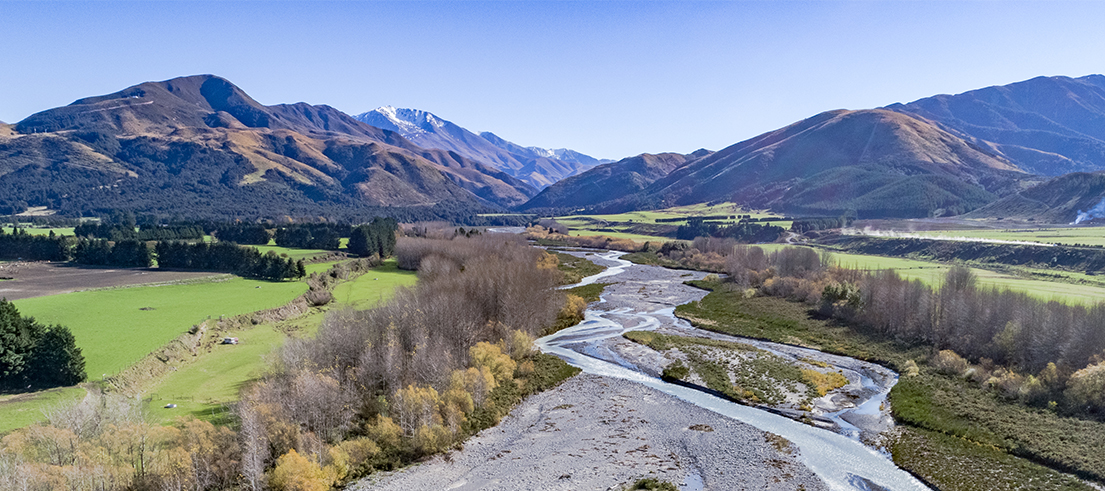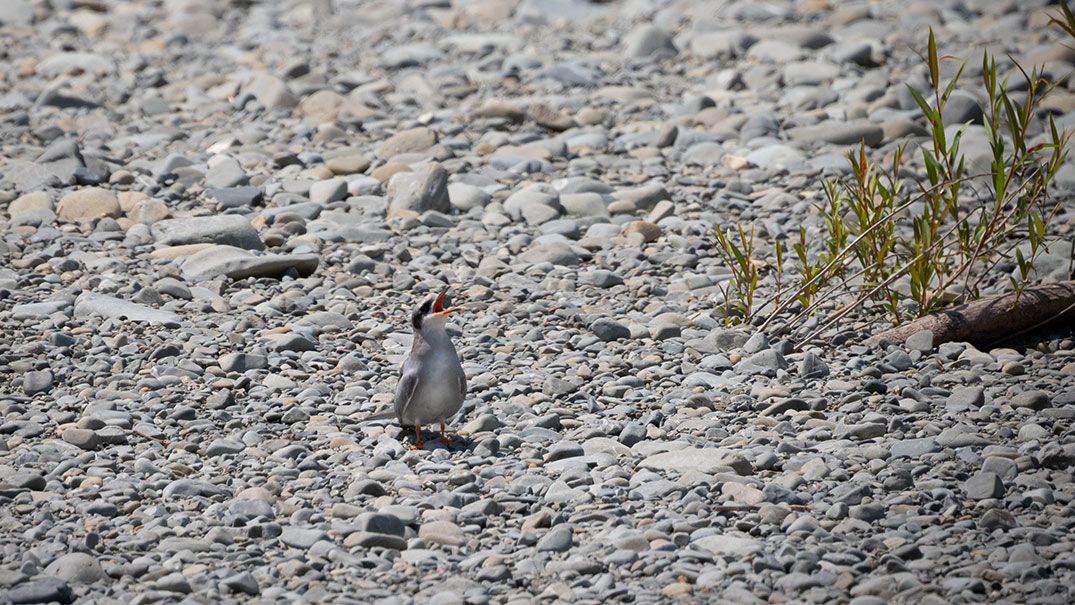
New minimum flow will improve mauri of Ashburton River/Hakatere
Winding its way from mountains to sea, through farmland and urban areas, the Ashburton River/Hakatere is at the heart of the Ashburton region. Now a new minimum flow condition on the river's water users will help realise the community's aspiration for a healthier awa.
As of 1 July 2023, 74 consents to take water that either directly or indirectly affect flow in the Ashburton River/Hakatere have a new minimum flow condition attached. Water users will not be permitted to take water when flow is less than six cumecs at State Highway 1. Some have additional minimum flow conditions for other measurement points upstream.
A process years in the making
Under the Canterbury Water Management Strategy, the Ashburton Water Zone Committee was tasked with overseeing the development of a Zone Implementation Programme (ZIP) – essentially, a plan for meeting the community's freshwater goals.
The Ashburton ZIP, passed in 2011 after extensive community consultation, acknowledged that the Ashburton River/Hakatere was overallocated, and made the restoration and enhancement of the river's natural flow regime a priority.
The ZIP stated, "We want an Ashburton River/Hakatere which all of the local community can be proud of, by enabling people to be able to swim safely in it, enabling people to successfully fish in it and gather mahinga kai, enabling all migratory species that use it to reach their spawning grounds and hence survive, having an open river mouth, and having a safe environment for bird life."
Consent review a necessary tool
Water users with resource consent previously had a legal right to take water, even if the river was allocated and flowing at below six cumecs. Most resource consents in the catchment expire between 2028 and 2040, and it won’t be until all resource consents have the new minimum flow condition attached that benefits will be seen. In the meantime, those with later consent expiry dates would get more access to water as other consents expired, creating an unequitable situation. That's why Regional Planning Manager Andrew Parrish says a consent review process was needed.
"The Ashburton community made it clear through our planning process that the river's health was essential to their region" Parrish says. "While providing economic benefits, it is also a key space for mahinga kai, recreation and amenity – as well as a biodiversity hotspot – and more water needed to be left in the river during dry spells to allow ecosystems to thrive."
Parrish acknowledged that minimum flow conditions will mean it is more difficult for some landowners to irrigate efficiently.
"There is no doubt that this has made some consent holders' lives more difficult. We want to thank them for their understanding and engaging with us throughout this process."
Changes will improve conditions for migratory fish
At times of low rainfall the Ashburton/Hakatere rivermouth naturally closes. But minimum flow conditions should increase the number of days the river flows to sea, especially during key periods over spring and summer that are essential for the migration of fish species.
Indigenous species like inanga (whitebait) and sports fish like salmon and trout spend part of their lives at sea and part in the river, so the rivermouth opening is essential both for preserving native fish, and supporting anglers.
While this new minimum flow is a positive move, Parrish said that the Canterbury Land and Water Regional Plan seeks continual improvement towards limits and targets, so more actions will be needed in future.
"We're starting community consultation on our visions for freshwater, which will inform a new Regional Policy Statement in 2024. We want the community to get involved to help shape the Waitaha they want to see," Parrish said.


